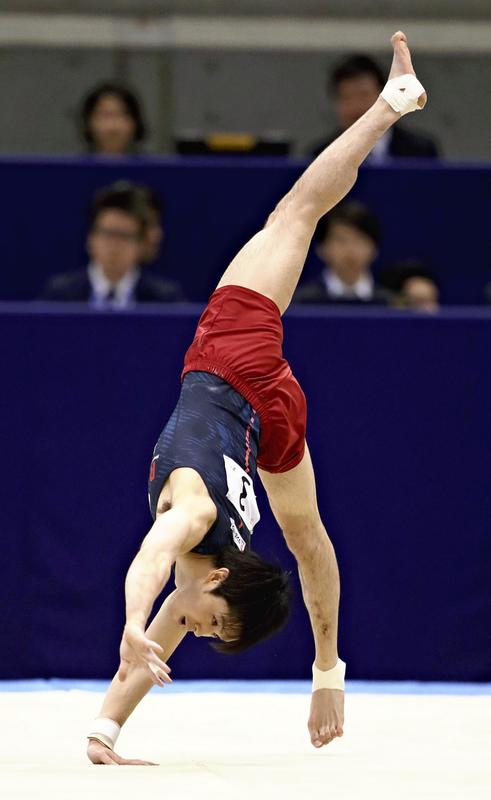
A gymnast demonstrates somersaults, twists and over movements on a 12-meter by 12-meter floor; the floor exercises of artistic gymnastics. Gymnasts are able to do these challenging techniques thanks in part to continuous improvements on the structure beneath their feet.
The floor -- developed by sporting equipment maker Senoh Corp. in Matsudo, Chiba Prefecture, after repeated trial and error -- has a reputation for being a "bouncy floor" with springs that support the floors by Senoh and other companies becoming the staple within global gymnastics circles.
A total of 2,080 strong, metal springs five centimeters in diameter and 11 centimeters in height are installed at the bottom of the floor to create repulsion. A 15 millimeter panel is placed on top of them, and above the panel, two types of cushions, one with excellent shock absorption and the other with bounce, are placed to form a layered structure.
The company's gymnastics floors in the 1970s were made by simply attaching 10-millimeter thick rubber under plywood, making the floors almost inelastic. Some gymnasts got seriously injured, including Achilles tendon tears, on their floors.
In the 1980s, the company introduced a multilayered structure with plastic springs on the bottom. In the 1990s, Senoh used 60-millimeter tall sponges with higher elasticity to support the multilayered structure of panel, with cushions below a carpet. This floor evolved to its current incarnation with metal springs in 2003.
Hiroyuki Tomita, an associate professor at Juntendo University who won the gold medal in the men's team competition at the 2004 Athens Olympics, said the key feature of the current model is its "repulsive force." Tomita reached his peak as an athlete during a transition period for Senoh's floor from sponges to metal springs.
Tomita had to go from a floor where "I had to kick and jump on a hard floor that didn't give," to "I had to figure out what skills I needed to move on a floor that gives and has bounce to it."
Kohei Uchimura was the first to overcome the new characteristics and became a leading gymnast in floor exercises. In his childhood, Uchimura repeatedly trained using trampolines, making him the perfect candidate to work a floor supported by metal springs.
At the 2011 World Championships held in Tokyo, Uchimura won the floor exercise, and the floor used in the competition was well received by foreign gymnasts. That prompted other sporting equipment makers in Europe, which had mainly used sponges, follow suit. Since 2013, metal spring-supported floors have been used at the all Olympics and World Championships.
A metal spring floor is expected to be used at next year's Tokyo Olympics as well, according to the International Gymnastics Federation (FIG).
Read more from The Japan News at https://japannews.yomiuri.co.jp/







